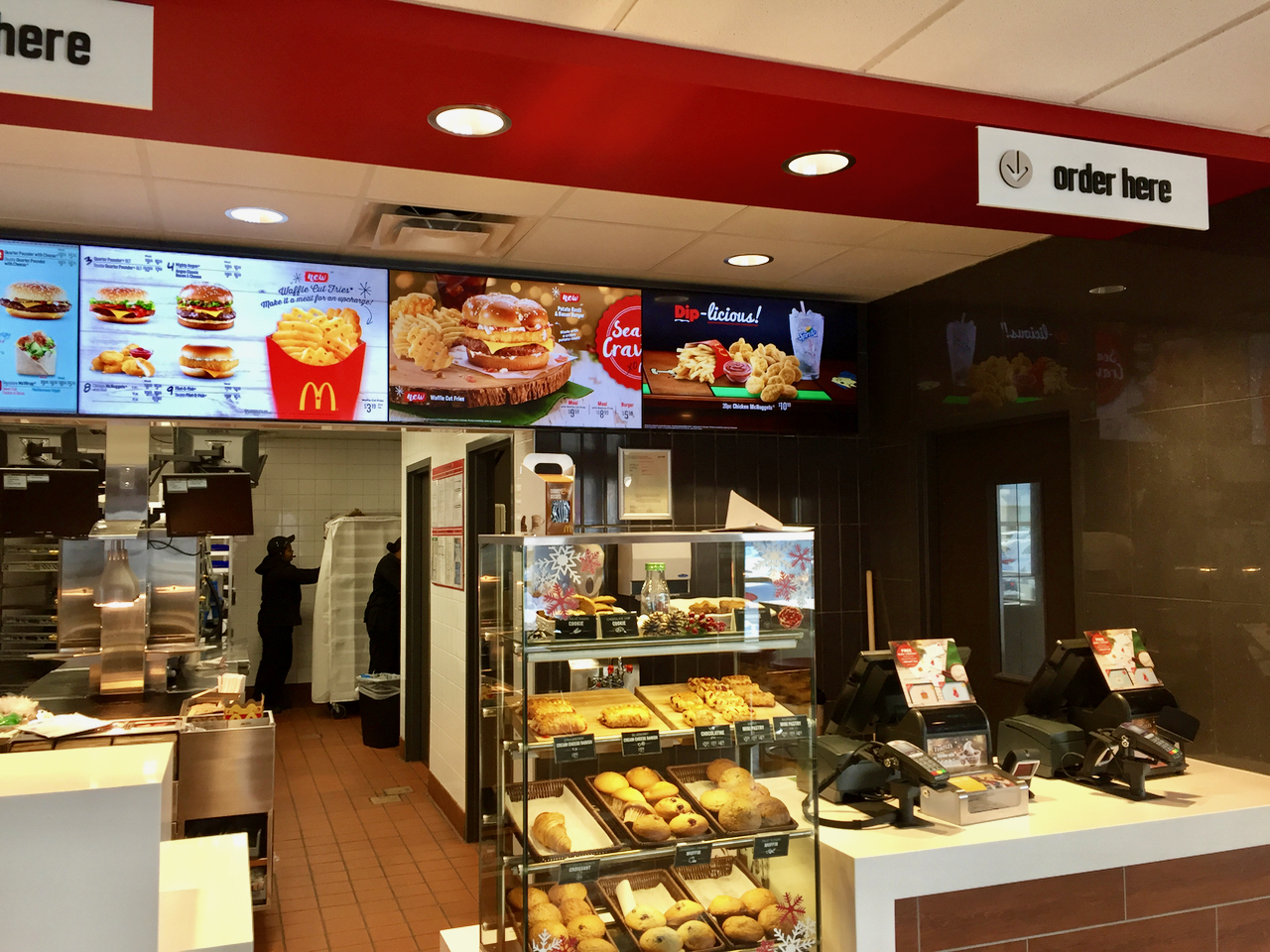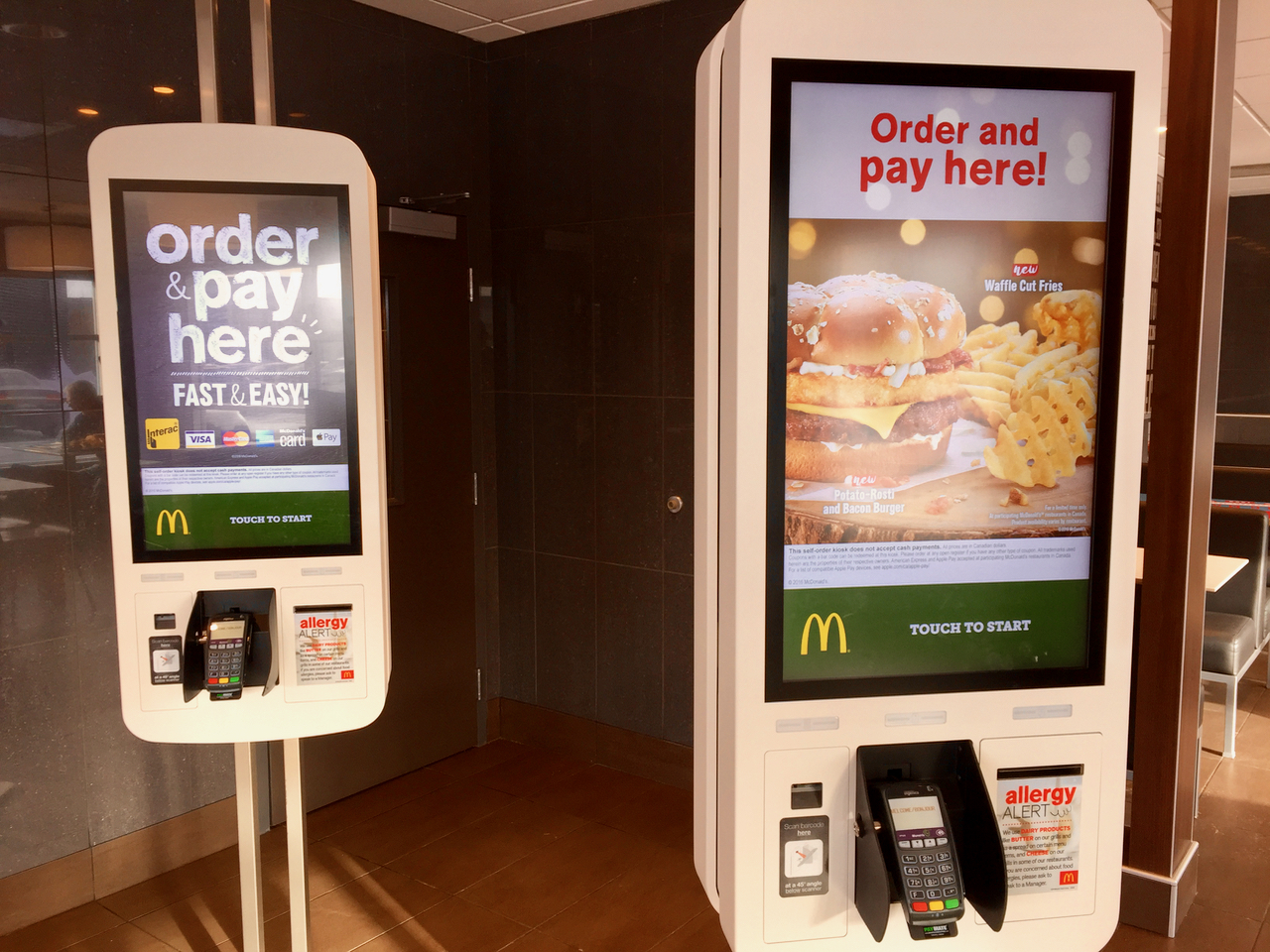
Sometimes you get ideas when in the shower, but I had one while obtaining some fast food recently.
But let’s back up a bit. Recently I wrote a story about BeeHex’s development of a pizza 3D printer. The idea of a personal food printer might be compelling at first, but it is largely a very impractical idea that few would find of value. BeeHex realized this as well, but soon turned their toward a new target: industrial food preparation.
As I described in the article, BeeHex discovered that in the case of pre-made pizza manufacturers, a huge proportion of the cost of the pie is from manual labor that is very often inconsistent and error-prone. Their new goal is to develop an automated system for such manufacturers that can not only save on costs, but produce superior pizzas at a lower price per unit.
Ok then.
I was in a McDonalds fast food restaurant the other day and noticed they’d installed these:

They are a gigantic touch screen order system that guests use to specify and even pay for their order. The orders are clearly defined, as the menu system won’t make mistakes – although you could order something by your own mistake, of course. Here there will be no confusion between the order and the kitchen. In fact, the device even says “Sending your order to the kitchen”, as if it requires effort to do so, when it’s just an electronic message.
You then present yourself – and your order number – at the counter to receive your greasy burger and fatty fries.
But the juxtaposition of this new McDonalds ordering system and the BeeHex project got me thinking: Could McDonalds implement a similar 3D food printing system behind that counter?
Think about it: McDonalds recipes are extremely mature and very precisely defined. That’s their claim to fame: you will get the same food no matter which outlet you visit around the world.
So if you have a well-defined formula for making each menu item, would it not be possible to build a simple machine that could construct it on demand? This is precisely what BeeHex is doing for pizzas; why couldn’t the same be done for Big Macs? Wouldn’t a machine-based system execute the recipe more precisely than any human could do?
Certainly there would be challenges in doing so:
- How do you manage the flow of frozen food ingredients to the food printer?
- How do you keep the entire chain of activity food safe?
- How do you clean a robotic device?
- How is quality control accomplished?
But these are problems that seem solvable, and indeed BeeHex must certainly be doing the same things.
If such a system were in place, a McDonalds franchise could adjust the number and type of workers at the restaurant. There would be fewer cooks, but perhaps more emphasis on workers that handle the raw food component inventory. They’d ensure supplies are on hand and load the machines as demand ebbs and flows.
Meals would become far more consistent, although they may never visibly appear as wonderful as is portrayed in advertisements. But with such a system you could attempt to do so.
The other very interesting result of this machinery would be an ability for McDonalds corporate to make instantaneous recipe changes across all outlets. Imagine that they’ve realized the fries must be dipped in oil that’s three degrees cooler for thirteen extra seconds. That could be deployed immediately when discovered, without the need for lengthy staff training.
3D food printers are unlikely to enter your home, but the more I think about it, there are many industrial operations that might be able to use them.

